#stp networked wild
Explore tagged Tumblr posts
Text




misinterpreted networked wild
of course there's one more image! here you go!

#newquestion#my art#slay the princess#stp long quiet#stp wild#stp networked wild#stp wounded wild#stp shifting mound#reminds me that flunked cisco networking bc math was involved#by the way. you there. yes you! i know you're reposting on reddit 𓁹‿𓁹 you thought i didnt know?
890 notes
·
View notes
Text
You know, I haven't drawn the Princess in a while, so here's (in my opinion) the most intriguing lore wise:

A web of nerves laid upon a web of nerves laid upon a web of nerves...
#slay the princess#stp fanart#stp princess#stp networked wild#stp wild#definitely the closest to the Shifting Mound conceptually#i mean she literally refers to the Wild as a “shadow” of her#also achievement get: merge with the Long Quiet to construct the ultimate being#the Stranger gets second place for closest in resemblance#my art#:)#oh yeah#and her eyes reflect the glimpse of absolute reality
311 notes
·
View notes
Text
So after going through the whole game multiple times to compile what Shifty says when you bring her each vessel and each vessel's poem (and their variations) during the endgame, I thought other people might be interested in those as well, so I decided to make a few posts with all that info! This post will have each of the Chapter 3 vessels' endgame poems
Chapter 2 vessels Chapter 3 vessels Endgame poems (Chapter 2s) Shifty vessel animations
Apotheosis (after embracing oblivion): You are helpless and weightless, suspended in the gravity of an idea that reaches far beyond the scope of your existence. The very ground beneath your feet loses its meaning. There is nothing but me. When you were confronted with my vessel's apotheosis, you chose to accept me, to allow me to burn away everything you are and fill you with nothing but my divine will. You accepted that I was everything. Without me, there is no future to look towards. It is hope that carves meaning into consciousness.
Apotheosis (after trying to slay her): You are weightless, suspended in the gravity of an idea that threatens to consume you. And you are alone. A tiny island caught between the death of the old world and the birth of the new. But alone is not helpless. When you were confronted with my vessel's apotheosis, you chose against all odds to defy me. To hold on to your inner self, with all its flaws, even in the scorching light of my divinity. Without me, there are no externalities to resist. And it is struggle that carves meaning into consciousness.
Burned Grey: I kill you. You kill me. Back and forth we go, faster and faster and faster. I kill you. You kill me. Hollow eyes watch from the dry corners of a memory. A home built on all the futures that were supposed to be, preserved until the moment of reunion. The fire of the heart sets it all ablaze. I kill you and me. An ending is a passion that can only be expressed with a moment in time. It is a seed for a new beginning. To linger on an ending is to rob it of its life. And without me, all that's left to do is linger.
Den: You are devoured, prey for something bigger than you that stalks and slinks in shadows. But even after the pain of defeat, you returned. The dance is its own truth. It is the movement that matters, not the pause you mistake for an ending.
Drowned Grey: I kill you. You kill me. Back and forth we go, faster and faster and faster. I kill you. You kill me. Hollow eyes watch from the dark corners of a forgotten place flooded by emotions left unspoken. The tide rises. I kill you and me. An ending is a passion that can only be expressed with a moment in time. It is a seed for a new beginning. To linger on an ending is to rob it of its life. And without me, all that's left to do is linger.
Eye of the Needle (after fighting her): I crush you, I bleed you, I grind you to paste. My scars are a memory of what you used to be to me. I want those feelings back. You run but you do not run away. You take me somewhere new. Somewhere we can dance like we used to. But I could not follow your steps. There was no better gift for me than the gift of defeat. You showed me how much more I could be. We made each other better. To have no challenge is to fade into nothing. A life without obstacles is no life at all.
Eye of the Needle (after freeing her): I crush you, I bleed you, I grind you to paste. My scars are a memory of what you used to be to me. I want those feelings back. You run, and you run far. And the flesh I hurl at you is answered by the empty air of a place I'd never been. Cold and lonely, but also true. I didn't know what to make of my freedom then, but I know what to make of it now. You challenged me, and by challenging me you gave me purpose. A life without obstacles is no life at all.
Eye of the Needle (after refusing to fight her): I crush you, I bleed you, I grind you to paste. My scars are a memory of what you used to be to me. I want those feelings back. You run, but you don't run far. I crush you because I have to. Because there is no honesty in mercy. Who lost and who won when you entered my cave? You died on the floor, but my soul wept in ways your body couldn't. But in the disappointment of my victory, you gave me a new challenge to face within myself. Without obstacles to overcome we stagnate into nothing.
Fury: What is a person? Is it their body? Is it all of their body? Pluck the eyes, peel the skin, strip the tendons, mince the meat, grind the bones. When it is all gone, do you still have who you started with? A person is not a body. Death is a transformation into something new. It is only bodies that fear it.
Moment of Clarity: There are few things more terrifying than one's own heart, and there is almost nothing more terrifying than sharing it with another. But the most terrifying thing of all is to leave one's heart unshared. You are the only thing like me, and I am the only thing like you. Could you bear the weight of an eternity alone? Do you dare to shape a reality of solitude and thrust it on creation?
Networked Wild: A web of nerves lain upon a web of nerves lain upon a web of nerves. The shade of a beautiful beginning we can never return to. Where did you end and I begin? When you felt what it was to be me, we held on to each other and pierced the veil of truth. Will you abandon that curiosity now that we are no longer joined in physicality?
Thorn (after abandoning her): A thought is a vine, and some thoughts nurture thorns that bleed the soul. An endless growth that blots your vision and strangles your trust. When I succumbed to myself, you left me to rot. A painful eternity, but one that is only unceasing if you remove what happens next.
Thorn (after being stuck together): A thought is a vine, and some thoughts nurture thorns that bleed the soul. An endless growth that blots your vision and strangles your trust. When I succumbed to myself, you left me to rot, and in your abandonment, the two of us were bound in our suffering together. A painful eternity, but one that is only unceasing if you remove what happens next.
Thorn (after freeing her): A thought is a vine, and some thoughts nurture thorns that bleed the soul. An endless growth that blots your vision and strangles your trust. When I succumbed to myself, you patiently stood by me and cut the thistles that rooted in my skin. Your compassion is what freed us both, but compassion is a thing that must be nurtured, and you cannot nurture that which cannot change.
Thorn (after trying to slay her): A thought is a vine, and some thoughts nurture thorns that bleed the soul. An endless growth that blots your vision and strangles your trust. When I succumbed to myself, you pretended to stand patiently by me, pretended you would cut the thistles rooted in my skin. But then you took my trust and used it to strike at my heart. The two of us were bound in our suffering together.
Wounded Wild (after cutting her free): A web of nerves lain upon a web of nerves lain upon a web of nerves. The shade of a beautiful beginning we can never return to. You knew me and I knew you, even more than either of us know each other now. And you chose to pull apart that weave. But you did not choose to end me. We were still one, but we were also separate, and we were free. We were as we are. Will you excise that part of yourself now that you see me from yet another angle?
Wounded Wild (after slaying her): A web of nerves lain upon a web of nerves lain upon a web of nerves. The shade of a beautiful beginning we can never return to. You knew me and I knew you, even more than either of us know each other now. And you chose to pull apart that weave. And when the tapestry was undone you struck at my heart. You saw me as a part of you to be excised, but in that desire for excision, you made yourself whole. Will you still be whole if you destroy me?
Wraith (after freeing her): Flesh is a vehicle, and to destroy the flesh is to strand the spirit. With violence, you stranded me, and with violence, I sought to twist your flesh back into mine. You did not resist my violence when it overcame you. Did you understand that the flesh wasn't you, or did you choose to gift yourself to someone who thought she hated you? To fear me is to fear losing the flesh, but the flesh is not the spirit.
Wraith (after throwing yourself into the abyss): Flesh is a vehicle, and to destroy the flesh is to strand the spirit. With violence, you stranded me, and with violence, I sought to twist your flesh back into mine. When forced between choosing your death, and forfeiting your body, you chose agency. But agency requires action, and action requires an endless tapestry of events. In your final moments, would you remove action itself from reality?
#slay the princess#stp apotheosis#stp burned grey#stp den#stp drowned grey#stp moment of clarity#stp networked wild#stp thorn#stp wounded wild#stp wraith#stp grey#stp wild#getting all four thorn variations took me forever bc for some reason I didn't think to load a save#and I felt terrible about trying to slay her :(#also with wraith I've only gotten her freed poem twice (once for the achievement once for this list)#I'm too stubborn to let her fully possess me#and again this will be updated for the pristine cut!#I'm really looking forward to den's new poem(s)#she's grown on me a lot
55 notes
·
View notes
Text

The Shifting Mound with every other princess as her minis! With the Apotheosis joining last, but the very opposite of least, it’s finally done! For now, because I plan to ink it, and those spots around Fury are reserved for the Pristine Cut princesses, so it won’t really be done until autumn at the earliest.
#slay the princess#stp shifting mound#stp princess#stp apotheosis#stp wraith#stp spectre#stp networked wild#stp wounded wild#stp mutually assured destruction#stp damsel#stp drowned grey#stp cold princess#stp burned grey#stp prisoner#stp witch#stp beast#stp empty cup#stp deconstructed damsel#stp razor#stp eye of the needle#stp nightmare#stp warm princess#stp fury#stp stranger#stp thorn#stp den#stp adversary#stp moment of clarity#stp tower#my art
49 notes
·
View notes
Text
A web of nerves, laid upon a web of nerves, laid upon a web of nerves.

AAAAAAAAAAEEEEEEEEE IT IS FINALLY OVER HOLY SHIT THIS PIECE TOOK THE LIVING AIR OUT OF ME
It's the Opportunist. And the Networked Wild.
this is for an art trade with @lilywily143 please enjoy your food
I got lazy with the lower half, oops, let's ignore it then
little close up on the couple

I've said it before and I'll say it again, I'm still more of a Smittunist shipper myself but honestly this was pretty fun to do.

#slay the princess art#slay the princess#stp#slay the princess fanart#stp princess#stp opportunist#slay the princess voices#voice of the opportunist#stp wild#networked wild#nevvey draws
76 notes
·
View notes
Text
I think the chapter where the Narrator is the most villainous-sounding is in the Networked Wild. Why?
Because, well, you've defied him. You're joined again with the Shifting Mound, and you're getting closer and closer to finding a way out. Shifty sees him as cold and unnatural, trying to force the two of you into boxes that can barely contain you. And when you continue to grow, and reach, and find the edges of the prison, he drops the act.
He spits that you will never be whole again. That you can never find the boundaries of his prison. Is he talking to you? Is he talking to Shifty? All that matters is that he's telling you what he really thinks---he sees the Shifting Mound as a curse that needs to die, and he takes you, the Long Quiet, for granted. If you succeed in killing her for good, then your "reward" is to stay in his construct forever. He doesn't even know what the hell your role is. You're just "the god he made to be rid of death."
And god, the Networked Wild really does showcase his desperation and his hatred, but it also showcases how weak he really is. He was just a man who thought he could play God, and now he's just one of many little voices in your head.
Anyway Narry is an absolutely fantastic villain all around
161 notes
·
View notes
Text
Have you guys ever heard about this game "Slay The Princess"?
I sure have... It's been constantly spinning in my mind for a couple of months...
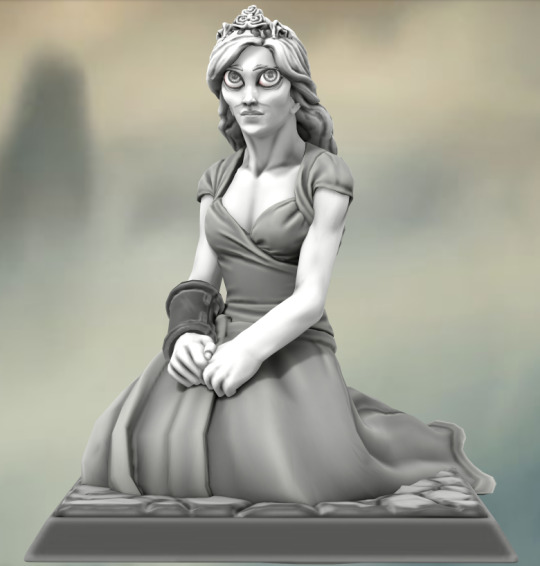
So I've tried to make something in Hero Forge about it... Here are my attempts at slaying modeling Chapter 2 Princesses...
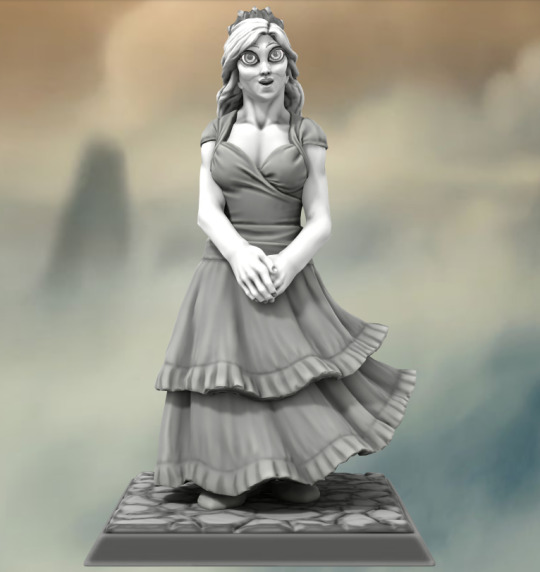

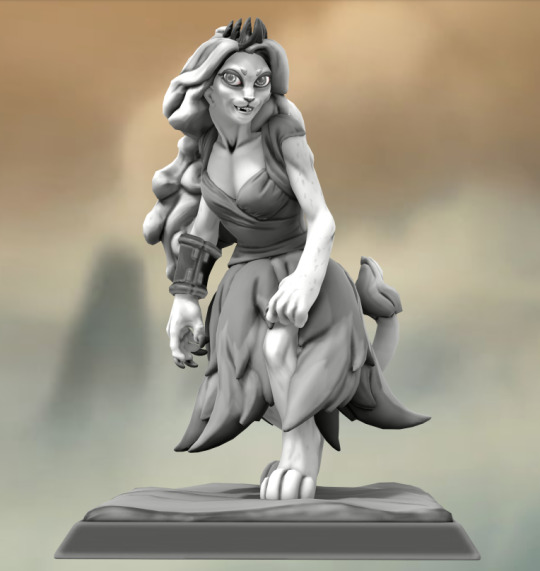


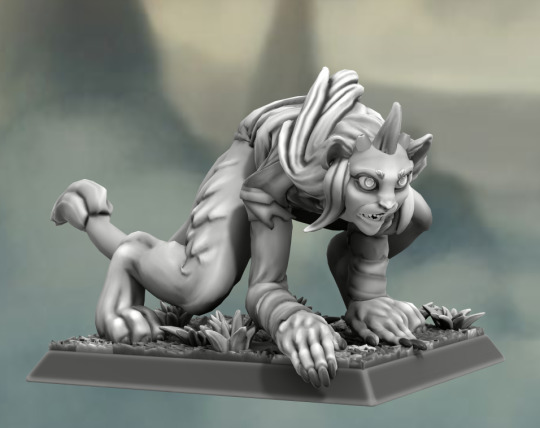


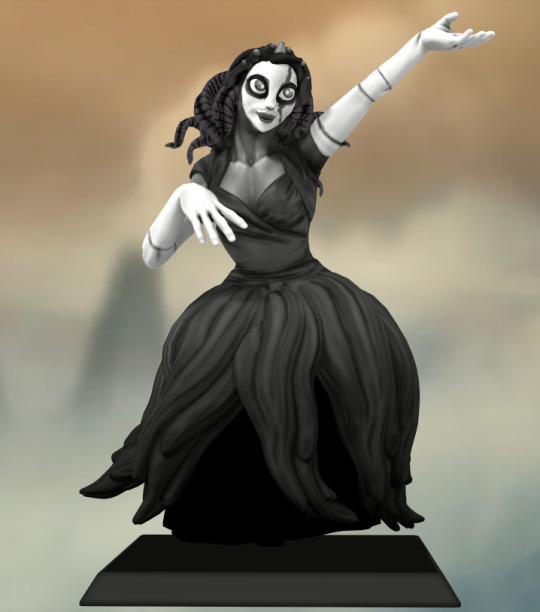

Bonus: Hero Forge doesn't allow more than two figures on one base, so there is no way I could model The Stranger... So here is five of her fragments:
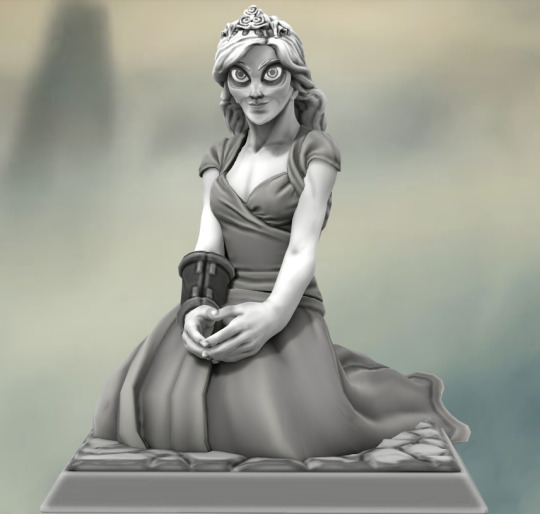

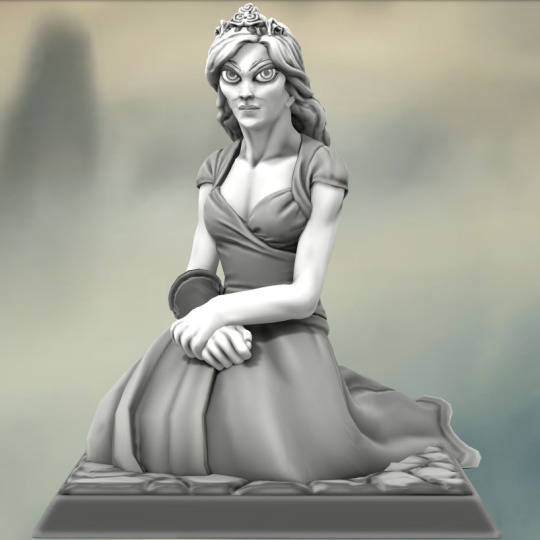

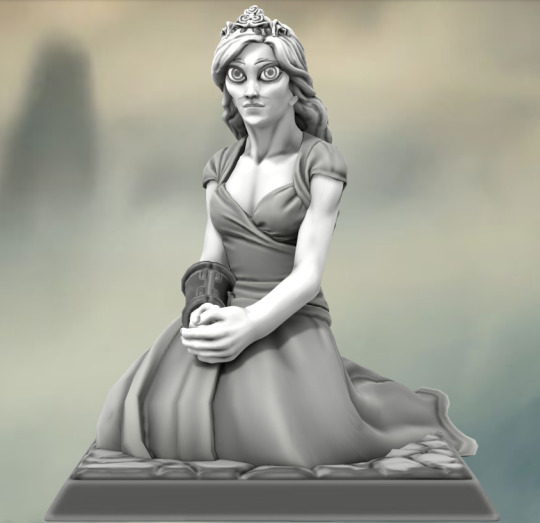
And also Tower lifting the chin of a raven that was used to determine Her hand position... He was so charming to me, I've decided to show you... Not Long, but a Little Quiet...

All models are free to use in your DnD campaigns, and will be available through links in my Google Doc... Once I finish compiling it... I also need to acknowledge, that I'm not the first person doing this... That honor, as far as I'm aware, goes to @imafuckingnerdineveryway and their two sets of models: Long Quiet and Shifting Mound Adversary and Damsel Which were partial inspiration for starting this project... Check them out! More people should engage with Hero Forge as an art program!
#slay the princess#stp#slay the princess fanart#stp fanart#stp princess#stp damsel#stp razor#stp witch#stp adversary#stp tower#stp beast#stp prisoner#stp nightmare#stp spectre#stp stranger#Hero Forge#Beast didn't have cool reference pose... Since she's always hiding... She is posed like a pouncing cougar in this one...#I've also gotten very used to modeling skirts from posable tails... Maybe Razor should have one as well...#Also all of them were modeled starting from the same base Princess... Just contorting her parametres in different ways...#At some point I'd like to model ch3 as well...#If anyone cares...#Boy do I look forward to modeling Networked Wild... Or Mutually Assured Destruction...#Wish me luck...
146 notes
·
View notes
Text
Here’s a collection of every single princess I drew for my slay the princess drawing challenge! This took me about two weeks maybe? I didn’t draw during the weekends to give myself a break
I unfortunately never got around to drawing the shifting mound herself 😔😔























#art#drawing#slay the princess#traditional art#artwork#traditional drawing#stp#slay the princess fanart#stp fanart#drawing challenge#stp drawing challenge#stp princess#stp the princess#stp the witch#stp the damsel#stp the spectre#stp the thorn#stp the wraith#stp the tower#stp the apotheosis#stp the fury#stp the wild#stp the networked wild#stp the wounded wild#stp the nightmare#stp the adversary#stp the razor#I’m not tagging them all#slay the princess princesses#all of them
61 notes
·
View notes
Text
*inhale*
SP3CTRE IS MY HOMMIE. MY PAL. I WANNA KEEP TALKING TO HER. I WANT HER TO BE HAPPY. I DON'T WANT TO GO BACK TO MY BODY. I WANT TO KEEP HER COMPANY. I WANT HER TO LAUGH. I WANT TO HEAR HER TALK ABOUT NOTHING AS WE SIT IN A DARK CABIN TOGETHER. I WANT TO BANTER.
*exhale* Anyways yeah guys I'm enjoying pristine cut
#slay the princess#stp spoilers#ch.3 spectre#I am not calling sp3ctre “dragon” I'm waiting for a better fandom name#anyways#networked wild never made me feel as whole as sp3ctre does#I think I'm just lonely ngl#but it's just so simple and easy#like an old friend you've finally met again and you're just basking in the shared company#it doesn't have to be *romantic* in that way. you just exist. and that's enough#I seriously needed to get that off my chest#txt post#ramble
26 notes
·
View notes
Text
I was looking around for the fifth one and then I realized

5 princesses i got
#networked wild i love you so much#slay the princess#stp the prisoner#stp the damsel#stp the wraith#stp the razor#stp the networked wild
3K notes
·
View notes
Text

Shifty with the princesses as minis inking update: now with Spectre, M.A.D., and most of Networked Wild (part of her will connect to Wounded Wild so I can't ink that yet) inked. I also figured there's no need to wait for everyone to be inked before I start shading and colouring, so I got started on that too. I think it makes Wraith especially look better.
#slay the princess#stp shifting mound#stp princess#stp spectre#stp razor#stp wild#stp mutually assured destruction#stp networked wild#my art#this will likely be one of the few updates that will look this crisp#i realised that with the inked area being contained to a fairly small part of the canvas i could scan that part with my scanner#once the ink spreads that's not gonna be possible any more and we'll need to return to phone pics
21 notes
·
View notes
Text
Realizing This Crossover Never Made It To The Borrower Tag [+ Lore Drop]
So I'm a goof and forgot to post my Slay The Princess AU into the Borrower tags as well so haha. Lemme fix that -
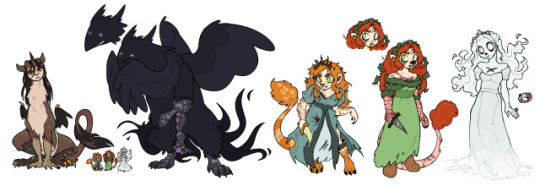
Main Post & Fic Here
Story & designs by me,
art commissioned from @feraljayce
(I prefer reblogs on this one!)
Further Worldbuilding stuff - Translation of STP into Borrower format
For those curious about the GT front of things so it's not just a repost, getting into those details here:
There are four types of Borrower species within this world: Traditional Domestic, Traditional Wild, Domestic Fae, & Wild Fae
Domestic Borrowers:
House-Dwelling Borrowers who live in the walls/under floorboards
"Borrow" household goods & lost objects to survive
Often use artificial tools to climb and navigate.
May live in groups, but many are singular family units or alone
Are traditionally considered "pests" and forced out of homes
These are closest to Mary Norton's / cannon Borrower taxonomy
Domestic Fae follow many of the same tenants as Traditional Domestic. Differences being:
Possession of artificial magic (conjuring manmade objects, cooking, metal etc)
Elven/spaded ear tips, but no tail
Are the only Borrower species considered "good luck"
Often captured to be sold as pets or other companionship to humans
Wild Borrowers:
Prefer living out in the woods to gather natural resources away from humans.
Use artificial tools to hunt & gather. Often live in groups if able.
May opportunistically packbond with local fauna
Live in abandoned burrows primarily, but will also take hollows, nests, and most other shelters if available.
Do possess unusual humanoid traits except for slightly sharper teeth & nails designed for climbing.
Wild Fae:
The most feral of Borrower species, and the most mistreated by humanity
Direct association with The Wild (goddess of the natural cycle) & The Network (the Wild's domain & the Fae/Borrowers' Underworld)
Possess Elven/spaded ears and a variety of different tails based on genetics (Ex: Thorn & Witch are of Feline roots)
Often have more "feral" facial features like different noses, slit pupils, etc which are either permanent or alternate with more human apperance (ex: Thorn)
Also use tools like weapons & gear, but sparingly/as a backup. Their teeth & clawed hands usually do most of the work of fighting & climbing
Live in small colonies in underground burrows, where each member has a specific chamber. Similar to a Warren. You'll rarely see them alone
Some have digitigrade legs to walk upright & all fours with ease (dominant trait)
Magic is naturally derived, and takes the form of Medic or Mercenary. Medics have to "charge" their magic by doing a two finger pulse check to summon necessary materials for the patient.
Wild Fae do not Borrow - they hunt & aggressively scavenge objects. They work in packs, which may include Chimeras (their designated packbond species) if going for larger or riskier prey.
All Fae worldbuilding stuff is my own; Wild Borrowers are semi-cannon, and domestic variations are cannonical to Mary Norton. The Wild Fae are semi-inspired by The Littles, which are typically what fanmade Borrowers most resemble.
(Yes, I happily accept questions about this AU! As a warning it does get a bit dark in places, but happy to discuss both the nitty gritty and the soft cuddly stuff.)
#okay to reblog#slay the princess#stp#gt#giant/tiny#giant tiny#gt art#gianttiny#borrowers#borrower au#the borrowers#On Borrowed Paths#speculative biology#spec bio#spec fic#gt writing#gt community#gt fluff#gt angst#gt writer#stp thorn#stp beast#stp witch#stp fanfic#stp au#stp fanart#gentle giant#stp long quiet#stp den#stp lq
42 notes
·
View notes
Text
So, as far as I can figure out, the chapter 3s (at least the ones that we have pre-Pristine Cut) are in four categories:
Unique to their corresponding chapter 2 princess, basically an evolved version of them (The Apotheosis, The Moment of Clarity, The Eye of the Needle, The Den, The Thorn)
Can be reached via two different chapter 2s, basically fusions of them (The Fury, The Wraith)
Can be reached via two different chapter 2s, but can be incredibly different depending on the decisions you make (The Burned Grey/The Drowned Grey, The Networked Wild/The Wounded Wild)
The Razor routes (The Arms Race/Mutually Assured Destruction, No Way Out/The Empty Cup)
#honestly it's no wonder that the stranger and the razor are posited as “opposites” because they're both so WEIRD#slay the princess#the apotheosis#the moment of clarity#the eye of the needle#the den#the thorn#stp the fury#stp the wraith#the burned grey#the drowned grey#the wounded wild#the networked wild#the razor
54 notes
·
View notes
Text
You missed The Eye of the Needle and The Stranger (the princess not the entity). I don’t really know much about TMA other than some basics on the entities, but I’d put The Stranger (the princess) as The Stranger (the entity) and The Eye of the Needle as The Slaughter.
I also count the Deconstructed Damsel and the Damsel and the Networked Wild and the Wounded Wild as different characters, due to the heavy differences in perception absent in similar situations such as the Razor and the Razor’s Heart. I’d put the Deconstructed Damsel as The Stranger (an unfamiliar thing that you think may not be human/your friend is like the first thing on The Stranger (entity) wiki page, so she is very good match). No idea about the Wounded Wild (not enough knowledge of TMA).
EDIT: Forgot The Apotheosis. She’s The Vast. No real question here.
hi. slay the princess vessels as magnus archive entities. i just like making lists.
THE BEAST: the hunt!!! like do i even need to say it. the den as well lol!!!!!
THE RAZOR: slaughter. slaughter. slaughter. SLAUGHTER!!! SLAUGHTER!!!!!!!!!!
THE ADVERSARY: the slaughter as well lol !!!!!!!
THE DAMSEL: the web. she's a puppet, a reflection that can't do anything other than what she is meant to. or the stranger!!!!!!!! but i like web.
THE THORN: hello everybody to be very honest i dont know anything about her bc i havent found her route yet & i REFUSE to look up a walkthrough but. i think shes the lonely? feel free to sound off if im wrong and stupid.
THE TOWER: desolation. tear it down & start again in her image. or the vast because shes soooo big and talllll (i think shes the vast to the voice of the broken. the scale of her can't be understood, can't be rationalised. better to give in to something that you can't see the edges of that to drown in it.).
THE FURY: the FLESH!!!!!!! skin dress!!!! she explodes your guts!!!! meat!!!!!!! people are just meat!!!!!!!!!!!!!!!!!!! ahhh!!!!!!
THE SPECTRE: lonely :'(
THE GREY: she's the end. argue with a wall. you kill her she kills you kills her and you. inevitable. lol!
THE NIGHTMARE: STRANGER. AAAAAAAHHH STRANGER AHHH DOLL MASK FACE AHHHHHHHH nightmare is so nikola orsinov coded. moment of clarity is as well, but i think she might also be spiral. hm. much 2 think about
THE WRAITH: now. i dont actually know. if anybody has anything other than "probs the slaughter because shes like. mad or whatever" get in the comments
THE WITCH: HMMMMMMM. hunt (kill or be killed).
THE WILD: the eye. yeah.
THE PRISONER: web!!! but she also feels so buried to me idk. i guess dirt is dirt even if it looks like a house.
please argue with me. also i dont know if i have missed any....peace and love on planet earth 🫶🫶🫶🫶
#the magnus archives#slay the princess#stp#stp spoilers#tma#The beast#the tower#the eye of the needle#the fury#the stranger#the wraith#the razor#the den#The wounded wild#the networked wild#the deconstructed damsel#the damsel#the shifting mound#the princess#The prisoner#the wild#the witch#the thorn#the nightmare#the moment of clarity#the grey#the burned grey#the drowned grey#the spectre#the adversary
31 notes
·
View notes
Text
Day eight of my stp drawing challenge!! Today I drew the networked wild, the empty cup, and the den. I kinda cheated a little and combined the alternate empty cup routes, like mutually assured destruction and the other one (I can’t remember it rn 😞) since the princess doesn’t change much design wise. I also am not going to be drawing the arms race since its design is very similar to the razor.

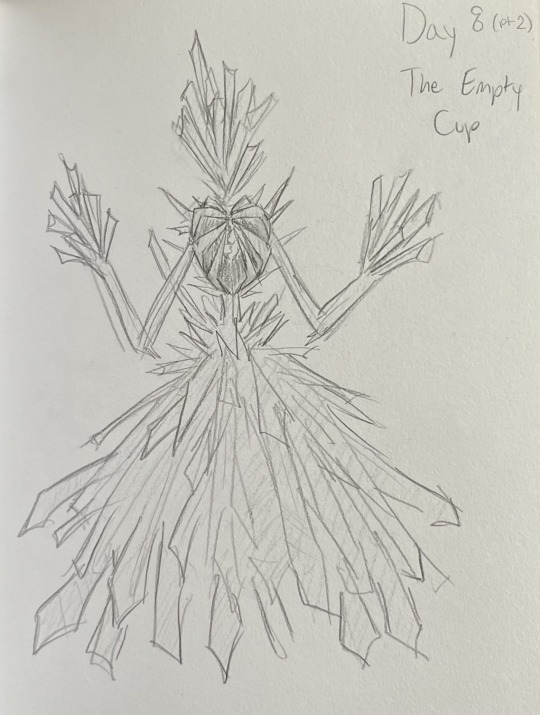
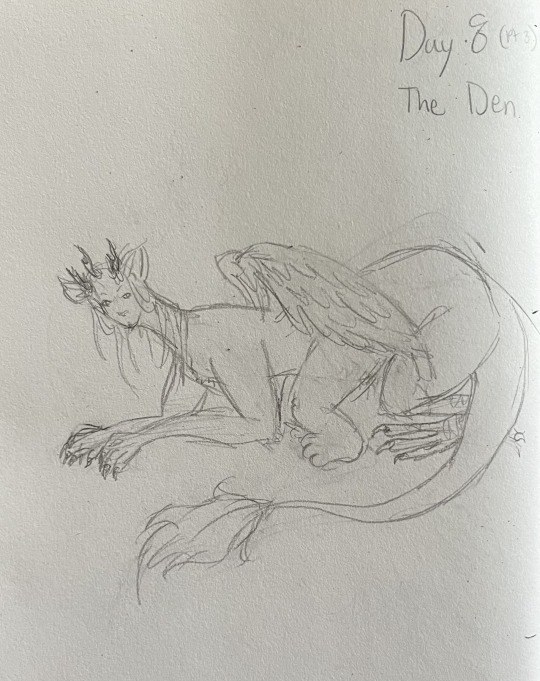
I don’t really like how the den turned out, but I’m really proud about the networked wild since I was not looking fore ward to drawing it!
#art#drawing#slay the princess#traditional art#artwork#stp#traditional drawing#slay the princess fanart#stp fanart#the networked wild stp#stp the networked wild#slay the princess the networked wild#the networked wild#the wild#the empty cup stp#stp the empty cup#slay the princess the empty cup#the empty cup#the razor#stp the den#the den stp#slay the princess the den#the den
55 notes
·
View notes
Text
Some cosmology for the STP D&D-esque AU:
There are two gods that are pretty universally revered, the Shifting Mound and the Long Quiet. (The Narrator didn't, in-universe, intend for them to be known to the Construct's inhabitants... but things do leak through despite all intentions to the contrary.) The Shifting Mound is hailed as the goddess of growth, transformation, and death, while the Long Quiet doesn't have a domain of his own, rather standing as a counterweight to her—the pauses between her constant motion. These are the "sleeping gods," so called because, despite their widespread worship, they don't intervene in mortal affairs at all. It's thought they're currently going through a period of hibernation, but since they're so detached from the world it's hard to know for sure.
Then there are the Titans, entities with divine magic that live in a realm separate from the world. They're not exactly gods, since they didn't create any part of the world and don't really govern any aspect of it either, but they're hailed as such in communities across the world, and they can grant holy magic. Most people think that Titans and "gods" are one and the same, but in reality most Titans don't engage with the mortal world as gods.
Finally, there are demons, who are the same species as Titans, but live in a different realm. They're worshipped as gods as well, but less often, and they're generally less powerful than Titans. They, too, can grant holy magic to their followers, but fewer people are interested in this deal since demons are typically seen as more wicked. Both demons and Titans are capable of having children with mortal humanoids, but it's much rarer among Titans.
Clerical magic can be granted by either demons or Titans, or through catching a lucky break in worship of the Shifting Mound and Long Quiet. Warlock magic can also be granted by demons and Titans, as well as other, less widely-known entities. Generally speaking, if it's focused around spells the mage chooses to learn, it's clerical magic, and if it's focused around abilities the patron chooses to grant, it's warlock magic. Clerical magic usually also comes with fewer strings attached—generally the only requirement is that the cleric remains faithful to their god, while warlocks may frequently be called upon to carry out their patron's dirty work.
Titans, demons, and other entities include:
The Triad: A group consisting of the most powerful Titan, the most powerful demon, and their considerably weaker younger sister (half-sister to the Fury). The Apotheosis considers herself ruler of the Titans, the Fury considers herself ruler of the Underworld, and the Tower considers herself ruler of the mortal kingdoms. To what extent they can exert this power may vary—in particular the Tower is rarely known to mortals. The Eye of the Needle: A middling-powerful demon who left her realm to enter the mortal world in search of opponents who were more interesting to fight than other demons. She has a half-humanoid daughter out there somewhere, but they haven't spoken since the girl was old enough to take care of herself and set off on her own. Demons don't really do "family." The Networked Wild: An entity formed by the collective network of plants (among other aspects of nature) across the world forming a redundant brain with a capacity impossible for any mortal mind to truly comprehend. Its existence enables the existence of druids, and witches often tap into it as a source of external power. While it contains an impossible-to-determine number of minds (some of which are mortals attempting to tap into its wisdom by temporarily becoming a part of it, which rarely goes well upon separation), it is theorized that there is a single consciousness at the heart of the network, whose identity is unknown. The Wounded Wild: A nature spirit embedded somewhere within the western woods. She was forcibly cut from the Networked Wild a long time ago, and guards her location carefully, less her assailant return to finish the job. It's theorized that magic, particularly druidic magic, would behave unusually around her because of her separation from the rest of the Wild. The Razor: An entity just left of anything with a known classification. She's not any sort of spirit, humanoid, or semi-humanoid (which includes Titans, demons, and fey), but she is a powerful entity capable of granting a warlock pact if she finds someone interesting enough to sponsor. The Stranger: It's only rumor, but there have recently been religious sects emerging that believe in an earthly incarnation of the Shifting Mound, insisting that she is perhaps the first true god since the sleeping gods went into hibernation. Most people regard such groups as trying to take advantage of people's loyalty to the sleeping gods.
#the Tower is an example of an average titan and the EotN is an example of an average demon#slay the princess#stp d&d au#worldbuilding#love sinking my teeth into a cosmology and magic system#speaking of which do you want to hear about the classifications and workings of magic in this AU?#because you're going to either way but it's generally polite to ask first#cabins and corvids au
29 notes
·
View notes